Report
Level of Effort:
WEST COG developed this riparian zoning publication that is primarily focused on water quality, but also is highly relevant to climate mitigation.
Report
Level of Effort:
WEST COG developed this riparian zoning publication that is primarily focused on water quality, but also is highly relevant to climate mitigation.
Funding
: Jul 26, 2024
remaining to apply
$500 - $1,000
Awards small grants in support of grassroots efforts and community-based environmental work in New England. The Grassroots Fund utilizes participatory grantmaking to move resources to New England grassroots groups working at the intersections of Environmental Justice. The program is geared toward groups who have some experience implementing a project in their community. Grants support groups to deepen their work by further developing a community vision, lowering barriers to participation, identifying new stakeholders, and working to bring more voices and lived experiences into core decision-making processes.
Funding
: Jul 26, 2024
$500 - $1,000
Awards small grants in support of grassroots efforts and community-based environmental work in New England. The Grassroots Fund utilizes participatory grantmaking to move resources to New England grassroots groups working at the intersections of Environmental Justice. The program is geared toward groups who have some experience implementing a project in their community. Grants support groups to deepen their work by further developing a community vision, lowering barriers to participation, identifying new stakeholders, and working to bring more voices and lived experiences into core decision-making processes.
remaining to apply
$10-20M (Track 1), $1-3M (Track 2)
EPA is accepting applications on a rolling basis for $2 billion in Inflation Reduction Act funding available to support community-driven projects that build capacity for communities to tackle environmental and climate justice challenges, strengthen their climate resilience, and advance clean energy.
$10-20M (Track 1), $1-3M (Track 2)
EPA is accepting applications on a rolling basis for $2 billion in Inflation Reduction Act funding available to support community-driven projects that build capacity for communities to tackle environmental and climate justice challenges, strengthen their climate resilience, and advance clean energy.
remaining to apply
no maximum or minimum
Smart Growth promotes several land use planning principles that create livable, sustainable and equitable communities. Financial assistance grants are available on a competitive basis to municipalities to develop or update comprehensive plans, area plans (such as Transit Oriented Development plan) or zoning ordinances that incorporate smart growth principles including promoting efficient and sustainable land development and redevelopment patterns that optimize prior infrastructure investments. These planning efforts should reflect a community goals and aspirations for its own future, and address a wide range of planning issues including, but not limited to, appropriate physical development, economic development, transportation patterns, natural and built resource inventories, and population trends, while setting a course for clean and affordable energy, efficient use of land, protection of agricultural working lands and forests and overall healthy communities.
no maximum or minimum
Smart Growth promotes several land use planning principles that create livable, sustainable and equitable communities. Financial assistance grants are available on a competitive basis to municipalities to develop or update comprehensive plans, area plans (such as Transit Oriented Development plan) or zoning ordinances that incorporate smart growth principles including promoting efficient and sustainable land development and redevelopment patterns that optimize prior infrastructure investments. These planning efforts should reflect a community goals and aspirations for its own future, and address a wide range of planning issues including, but not limited to, appropriate physical development, economic development, transportation patterns, natural and built resource inventories, and population trends, while setting a course for clean and affordable energy, efficient use of land, protection of agricultural working lands and forests and overall healthy communities.
remaining to apply
$50K-$3M
Local Waterfront Revitalization Program provides grants to municipalities along New York’s coasts or designated inland waterways to advance the preparation or implementation of strategies for community and waterfront revitalization through the following grant categories: 1) Preparing or Updating a Local Waterfront Revitalization Program (LWRP), 2) Updating an LWRP to be more Resilient to Climate Risk,s 3) Preparing an LWRP Component, including a Watershed Management Plan, and 4) Implementing a Local Waterfront Revitalization Program or a completed LWRP Component.
$50K-$3M
Local Waterfront Revitalization Program provides grants to municipalities along New York’s coasts or designated inland waterways to advance the preparation or implementation of strategies for community and waterfront revitalization through the following grant categories: 1) Preparing or Updating a Local Waterfront Revitalization Program (LWRP), 2) Updating an LWRP to be more Resilient to Climate Risk,s 3) Preparing an LWRP Component, including a Watershed Management Plan, and 4) Implementing a Local Waterfront Revitalization Program or a completed LWRP Component.
Funding
: Mar 20 – Sep 17, 2024
remaining to apply
$1,000 - $4,000
Awards small grants in support of grassroots efforts and community-based environmental work in New England. The Grassroots Fund utilizes participatory grantmaking to move resources to New England grassroots groups working at the intersections of Environmental Justice. The program is geared toward groups who have some experience implementing a project in their community. Grants support groups to deepen their work by further developing a community vision, lowering barriers to participation, identifying new stakeholders, and working to bring more voices and lived experiences into core decision-making processes.
Funding
: Mar 20 – Sep 17, 2024
$1,000 - $4,000
Awards small grants in support of grassroots efforts and community-based environmental work in New England. The Grassroots Fund utilizes participatory grantmaking to move resources to New England grassroots groups working at the intersections of Environmental Justice. The program is geared toward groups who have some experience implementing a project in their community. Grants support groups to deepen their work by further developing a community vision, lowering barriers to participation, identifying new stakeholders, and working to bring more voices and lived experiences into core decision-making processes.
Guidance Tool
Level of Effort:
The New York State Department of State worked with the Department of Environmental Conservation and other partners to create model local laws to help local governments be more resilient to sea-level rise, storm surge, and flooding. Cities, towns, and villages are invited to adapt model local laws to meet the resilience needs of the community with the assistance of their municipal attorneys.
Guidance Tool
Level of Effort:
The New York State Department of State worked with the Department of Environmental Conservation and other partners to create model local laws to help local governments be more resilient to sea-level rise, storm surge, and flooding. Cities, towns, and villages are invited to adapt model local laws to meet the resilience needs of the community with the assistance of their municipal attorneys.
Mapper
Level of Effort:
The FEMA Flood Map Service Center (MSC) is the official public source for flood hazard information produced in support of the National Flood Insurance Program (NFIP). Use the MSC to find your official flood map.
Mapper
Level of Effort:
The FEMA Flood Map Service Center (MSC) is the official public source for flood hazard information produced in support of the National Flood Insurance Program (NFIP). Use the MSC to find your official flood map.
Guidance Tool
Level of Effort:
This toolkit features legal and policy tools, best and emerging practices, and case studies to support learning and decision making around managed retreat and climate adaptation. It is meant to be used by state, territorial, and local policymakers in U.S. coastal jurisdictions
Guidance Tool
Level of Effort:
This toolkit features legal and policy tools, best and emerging practices, and case studies to support learning and decision making around managed retreat and climate adaptation. It is meant to be used by state, territorial, and local policymakers in U.S. coastal jurisdictions
Guidance Tool
Level of Effort:
Providex guidance and tools to help Connecticut municipalities and institutions comply with the MS4 general permit.
Guidance Tool
Level of Effort:
Providex guidance and tools to help Connecticut municipalities and institutions comply with the MS4 general permit.
Story Map
Level of Effort:
This story map examines the coastal processes and hazards of Long Island and provides options for sustainable and resilient shoreline management. Information is useful for coastal managers, planners and coastal property owners.
Story Map
Level of Effort:
This story map examines the coastal processes and hazards of Long Island and provides options for sustainable and resilient shoreline management. Information is useful for coastal managers, planners and coastal property owners.
Plan
Level of Effort:
An effort by Save the Sound and Earth Economics to identify opportunities for the Federal Emergency Management Agency (FEMA) and other federal agencies and funders to improve the ability of benefit-cost analysis tools to account for ecosystem-based benefits.
Plan
Level of Effort:
An effort by Save the Sound and Earth Economics to identify opportunities for the Federal Emergency Management Agency (FEMA) and other federal agencies and funders to improve the ability of benefit-cost analysis tools to account for ecosystem-based benefits.
Website
Level of Effort:
Contains guidance documents and information on coastal permitting from the State of Connecticut.
Website
Level of Effort:
Contains guidance documents and information on coastal permitting from the State of Connecticut.
Guidance Tool
Level of Effort:
A policy guide to help formulate position statements, legislative recommendations, and other policy-based actions, and to recommend program funding at the federal and state government levels.
Guidance Tool
Level of Effort:
A policy guide to help formulate position statements, legislative recommendations, and other policy-based actions, and to recommend program funding at the federal and state government levels.
Guidance Tool
Level of Effort:
This policy guide identifies specific ways in which the drafting, public engagement, application, mapping, and enforcement of zoning regulations can be changed to dismantle the barriers that perpetuate the separation of historically disadvantaged and vulnerable communities.
Guidance Tool
Level of Effort:
This policy guide identifies specific ways in which the drafting, public engagement, application, mapping, and enforcement of zoning regulations can be changed to dismantle the barriers that perpetuate the separation of historically disadvantaged and vulnerable communities.
Guidance Tool
Level of Effort:
A policy guide to that outlines the hazard mitigation planning process, including consideration of how to enhance awareness of risks and efforts to improve community preparedness, health, resilience, and sustainability in the face of both natural and human-caused hazards. The guide also discusses adaptation, response, and recovery—including decisions about whether and how to rebuild following a disaster.
Guidance Tool
Level of Effort:
A policy guide to that outlines the hazard mitigation planning process, including consideration of how to enhance awareness of risks and efforts to improve community preparedness, health, resilience, and sustainability in the face of both natural and human-caused hazards. The guide also discusses adaptation, response, and recovery—including decisions about whether and how to rebuild following a disaster.
Plan
Level of Effort:
Sea level preparation guidance for CT. Recommends planning for 20″ by 2050.
Plan
Level of Effort:
Sea level preparation guidance for CT. Recommends planning for 20″ by 2050.
Website
Level of Effort:
CLEAR, a program of UConn’s College of Agriculture, Health, and Natural Resources, provides information, education, and assistance to land use decision makers, in support of balancing growth and natural resource protection.
Website
Level of Effort:
CLEAR, a program of UConn’s College of Agriculture, Health, and Natural Resources, provides information, education, and assistance to land use decision makers, in support of balancing growth and natural resource protection.
Guidance Tool
Level of Effort:
Provides resources that help Connecticut’s municipal leaders fill gaps in local
extreme heat planning including
1. Communication templates
2. Cooling center best practices
3. A diverse collection of policy and planning actions
4. Advice on creating a heat response plan
Also provides Connecticut-specific information on how extreme heat impacts the
health of residents, especially vulnerable people, and extreme heat safety tips.
Guidance Tool
Level of Effort:
Provides resources that help Connecticut’s municipal leaders fill gaps in local
extreme heat planning including
1. Communication templates
2. Cooling center best practices
3. A diverse collection of policy and planning actions
4. Advice on creating a heat response plan
Also provides Connecticut-specific information on how extreme heat impacts the
health of residents, especially vulnerable people, and extreme heat safety tips.
Training
The second annual Long Island Sound Bi-State Sustainable and Resilient Communities Workshop brought together nearly 200 people virtually on Dec. 7, 2023 to learn about a new Long Island Sound Resilience Resource Hub (launching in early 2024), hear from communities and groups around the Sound working on resilience planning, and consider pathways for updating codes and ordinances. Videos of the workshop’s six sessions are available on YouTube. They can be accessed below along with supporting documents.
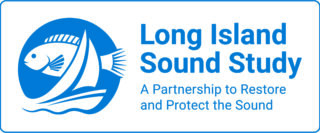
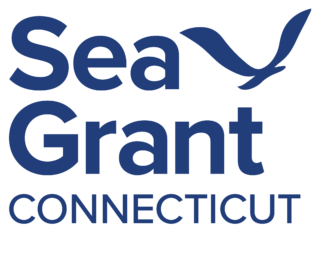

Training
The second annual Long Island Sound Bi-State Sustainable and Resilient Communities Workshop brought together nearly 200 people virtually on Dec. 7, 2023 to learn about a new Long Island Sound Resilience Resource Hub (launching in early 2024), hear from communities and groups around the Sound working on resilience planning, and consider pathways for updating codes and ordinances. Videos of the workshop’s six sessions are available on YouTube. They can be accessed below along with supporting documents.



Training
Held at Locust Valley Library in Nassau County on May 4, 2023, this forum brought together state and local decision makers and other stakeholders, working to address coastal erosion along the Long Island Sound shoreline. Panelists highlighted strategies and options to address coastal erosion, discussed the Coastal Erosion Hazard Areas Program, local codes, updated New York State sea level rise projections and more. During small group discussions, attendees discussed challenges and identified opportunities to increase resilience, all in an effort to enhance coordination across communities. This forum was hosted by New York Sea Grant and Long Island Sound Study, in partnership with Nassau County Soil and Water Conservation District.



Training
Held at Locust Valley Library in Nassau County on May 4, 2023, this forum brought together state and local decision makers and other stakeholders, working to address coastal erosion along the Long Island Sound shoreline. Panelists highlighted strategies and options to address coastal erosion, discussed the Coastal Erosion Hazard Areas Program, local codes, updated New York State sea level rise projections and more. During small group discussions, attendees discussed challenges and identified opportunities to increase resilience, all in an effort to enhance coordination across communities. This forum was hosted by New York Sea Grant and Long Island Sound Study, in partnership with Nassau County Soil and Water Conservation District.



Training
Held at Port Jefferson Village Center in Suffolk County on May 10, 2023, this forum brought together state and local decision makers and other stakeholders, working to address coastal erosion along the Long Island Sound shoreline. Panelists highlighted strategies and options to address coastal erosion, discussed the Coastal Erosion Hazard Areas Program, local codes, updated New York State sea level rise projections and more. During small group discussions, attendees discussed challenges and identified opportunities to increase resilience, all in an effort to enhance coordination across communities. This forum was hosted by New York Sea Grant and Long Island Sound Study, in partnership with Suffolk County Soil and Water Conservation District and Suffolk County Legislators Sarah Anker, Stephanie Bontempi, Kara Hahn, and Al Krupski.
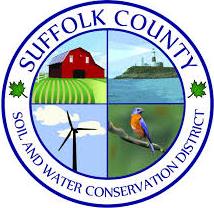
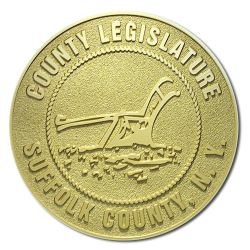


Training
Held at Port Jefferson Village Center in Suffolk County on May 10, 2023, this forum brought together state and local decision makers and other stakeholders, working to address coastal erosion along the Long Island Sound shoreline. Panelists highlighted strategies and options to address coastal erosion, discussed the Coastal Erosion Hazard Areas Program, local codes, updated New York State sea level rise projections and more. During small group discussions, attendees discussed challenges and identified opportunities to increase resilience, all in an effort to enhance coordination across communities. This forum was hosted by New York Sea Grant and Long Island Sound Study, in partnership with Suffolk County Soil and Water Conservation District and Suffolk County Legislators Sarah Anker, Stephanie Bontempi, Kara Hahn, and Al Krupski.




Training
On Thursday, June 15, Save the Sound, Connecticut Sea Grant, New York Sea Grant, The Pew Charitable Trusts, and Earth Economics hosted an invite-only workshop, “Expanding the Benefit-Cost Analysis for Nature-Based Solutions,” which was attended by more than 50 professionals from federal and state agencies, municipalities, environmental NGOs, and engineering firms.
The workshop reviewed the results of an effort by Save the Sound and Earth Economics to identify opportunities for the Federal Emergency Management Agency (FEMA) and other federal agencies and funders to improve the ability of benefit-cost analysis tools to account for ecosystem-based benefits. See here for the associated report, Expanding FEMA’s Benefit Cost Analysis: Chittenden Living Shoreline Case Study (published June 2023).



Training
On Thursday, June 15, Save the Sound, Connecticut Sea Grant, New York Sea Grant, The Pew Charitable Trusts, and Earth Economics hosted an invite-only workshop, “Expanding the Benefit-Cost Analysis for Nature-Based Solutions,” which was attended by more than 50 professionals from federal and state agencies, municipalities, environmental NGOs, and engineering firms.
The workshop reviewed the results of an effort by Save the Sound and Earth Economics to identify opportunities for the Federal Emergency Management Agency (FEMA) and other federal agencies and funders to improve the ability of benefit-cost analysis tools to account for ecosystem-based benefits. See here for the associated report, Expanding FEMA’s Benefit Cost Analysis: Chittenden Living Shoreline Case Study (published June 2023).



Training
In this Coastal Resiliency Network webinar, Barbara Kendall from the NYS Department of State provides an overview of Local Waterfront Revitalization Programs (LWRP) and then representatives from four NYS coastal communities discuss their experiences developing and implementing their LWRPs. The Coastal Resilience Network, led by the New York State Association of Conservation Commissions (NYSACC) with assistance from NY Sea Grant, is a collaborative open forum for communities in coastal Westchester, Nassau, and Suffolk Counties to discuss and learn about opportunities to increase their resilience to sea level rise, flooding, and extreme events.
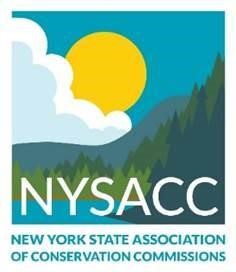


Training
In this Coastal Resiliency Network webinar, Barbara Kendall from the NYS Department of State provides an overview of Local Waterfront Revitalization Programs (LWRP) and then representatives from four NYS coastal communities discuss their experiences developing and implementing their LWRPs. The Coastal Resilience Network, led by the New York State Association of Conservation Commissions (NYSACC) with assistance from NY Sea Grant, is a collaborative open forum for communities in coastal Westchester, Nassau, and Suffolk Counties to discuss and learn about opportunities to increase their resilience to sea level rise, flooding, and extreme events.



Training
In this Coastal Resiliency Network webinar, Samantha Klein, Environmental Analyst for the Town of East Hampton, discusses her experience in paving the way to a more resilient East Hampton with the development of their CARP (Coastal Assessment Resiliency Plan). She focuses on lessons learned, funding, and providing guidance on how to get started creating your own CARP. The Coastal Resilience Network, led by the New York State Association of Conservation Commissions (NYSACC) with assistance from NY Sea Grant, is a collaborative open forum for communities in coastal Westchester, Nassau, and Suffolk Counties to discuss and learn about opportunities to increase their resilience to sea level rise, flooding, and extreme events.



Training
In this Coastal Resiliency Network webinar, Samantha Klein, Environmental Analyst for the Town of East Hampton, discusses her experience in paving the way to a more resilient East Hampton with the development of their CARP (Coastal Assessment Resiliency Plan). She focuses on lessons learned, funding, and providing guidance on how to get started creating your own CARP. The Coastal Resilience Network, led by the New York State Association of Conservation Commissions (NYSACC) with assistance from NY Sea Grant, is a collaborative open forum for communities in coastal Westchester, Nassau, and Suffolk Counties to discuss and learn about opportunities to increase their resilience to sea level rise, flooding, and extreme events.



Resources & Tools